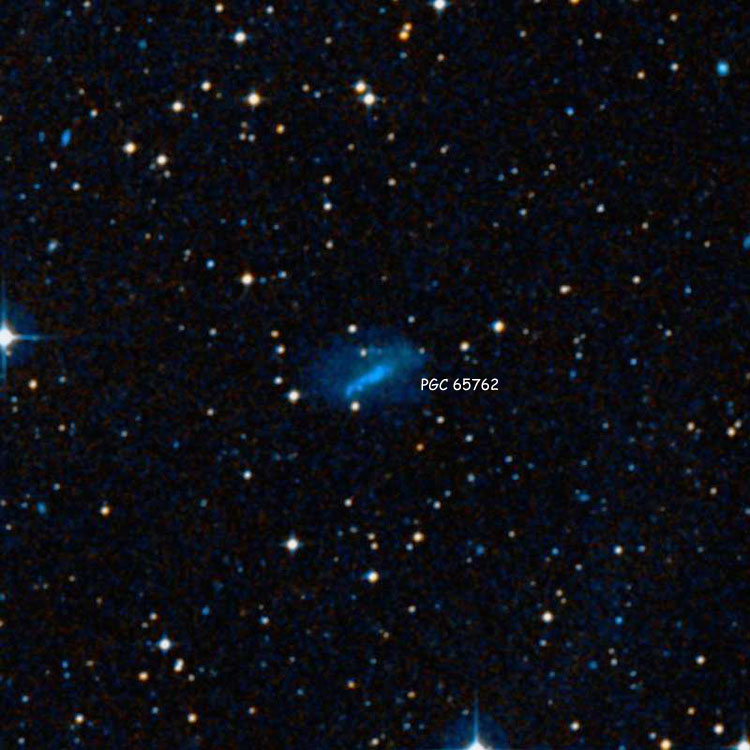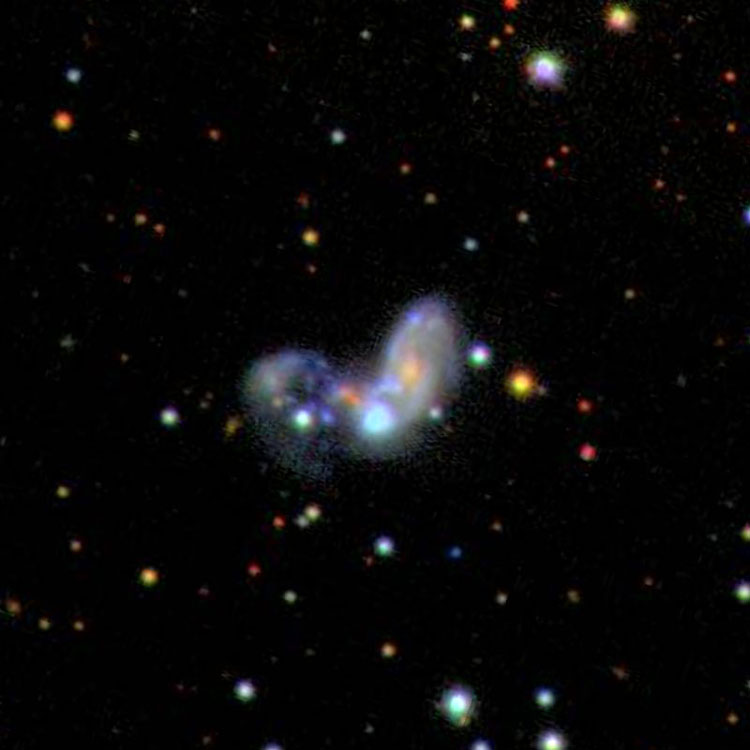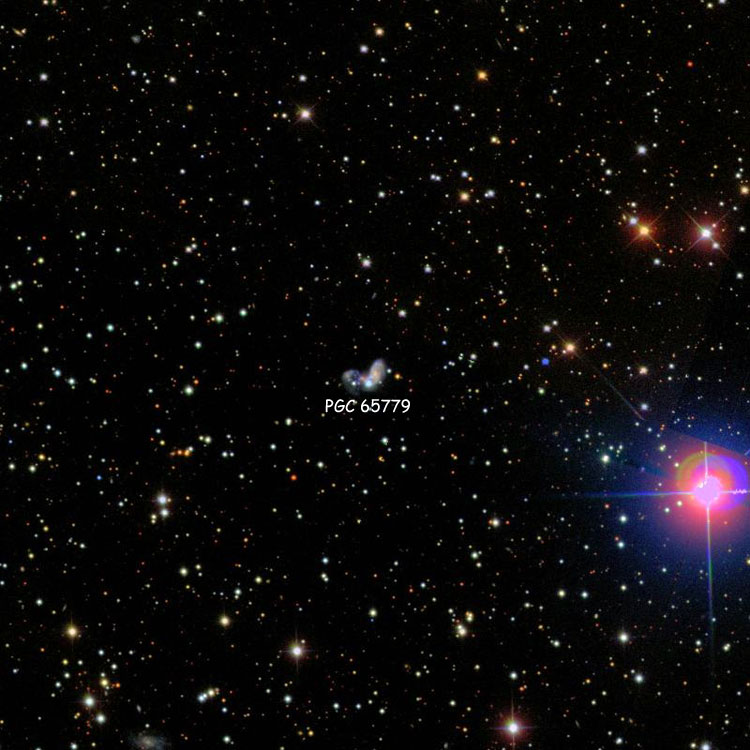Page last updated July 30, 2021
PGC 65685 (= PGC 130597 = ESO 286-10)
A 13th-magnitude spiral galaxy (type (R')SA(rs)a) in Microscopium (RA 20 54 21.1, Dec -44 03 46)
Based on a recessional velocity of 5370 km/sec, PGC 65685 is about 250 million light years away. Given that and its apparent size of 2.1 by 1.7 arcmin, it is about 150 thousand light years across. Used by the de Vaucouleurs Atlas of Galaxy Types as an example of galaxy type (R')SA(r)a.

Above, a 3 arcmin wide closeup of PGC 65685
Below, a 12 arcmin wide region centered on the galaxy

PGC 65762
(= ESO 187-035)
A magnitude 14.9 spiral galaxy (type SB(s)m) in Indus (RA 20 56 55.8, Dec -55 43 12)

Above, a 12 arcmin wide DSS image centered on spiral galaxy PGC 65762
PGC 65779
A 15th-(B)magnitude pair of galaxies (type S0/a pec + ?) in Delphinus (RA 20 57 23.6, Dec +17 07 44)
A spectacular result of galactic collision, PGC 65779 (also known as 2ZW096, due to its inclusion in a catalog of galaxy pairs by Fritz Zwicky) is an example of a "starburst" galaxy, in which violent compression of gases due to the physical and gravitational effects of the collision has created huge numbers of hot, bright young stars which are lighting up the galaxy fragments, heating up surrounding gas, and blowing it into intergalactic space. Based on a recessional velocity of 10820 km/sec, a straightforward calculation implies that the pair is about 480 million light years away. However, for such distant objects, we must consider the expansion of the Universe during the nearly half-billion year journey of the light by which we see the object; because of this, the pair was about 15 million light years closer at the time the light was emitted. Given that and their apparent extent of 0.55 by 0.3 arcmin, the pair is about 75 thousand light years across.

Above, a 2.4 arcmin wide view of the colliding galaxies
Below, a HST deep-sky closeup (Credits: ESA, Hubble Heritage (STScI/AURA)-ESA/Hubble Collaboration
and A. Evans (University of Virginia, Charlottesville/NRAO/Stony Brook University)
NASA)

Below, a 12 arcmin wide region centered on the object

|